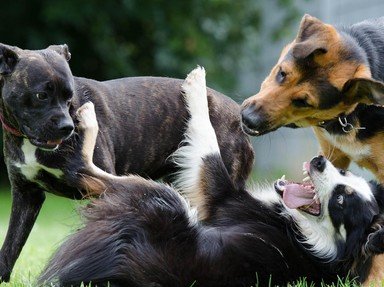Quiz Answer Key and Fun Facts
1. The dog we now know as the Scottish Terrier had been called by several other names over the years. Which of the following has been used for the Scottie?
2. Scottish terriers come in three colours. Everyone knows about the black ones! My Scotties, Meg and Fidget, are each one of the other colours. Meg is brindle (a mixture of black and another colour), so what colour is Fidget?
3. While we know Meg and Fidget are beautiful, we do not show them. However, some Scotties do very well in the show ring. A Scottie won the prestigious Best in Show at the Westminster Dog Show in 1995. She was Gaelforce Post Script. What was her call name?
4. Australian children's author May Gibbs had Scotties all her life. Her famous books, about the Gumnut Babies, featured a Scottie which later had his own book. What was the name of this storybook Scottie?
5. What is the most widespread inherited disorder in the Scottish Terrier?
6. The first dog show which recognised the Scottish terrier as a separate breed was held in London in 1879. A terrier owned by Sir Paynton Pigott was the first Scottish terrier to be entered in this show, and also won first prize in his class. What was the dog's name?
7. The standard under which Scotties are shown is the AKC (American Kennel Club) Standard. Which of the following is unacceptable in the show ring in the United States, Britain and Australia & NZ?
8. Scotties' ears are cropped to give them that alert look.
9. My Scotties, Meg and Fidget, have somewhat different personalities, but they are both typical Scotties. Which of the following traits is generally NOT considered a typical Scottie trait?
10. For what were the original Scotties bred?
Source: Author
Scottie2306
This quiz was reviewed by FunTrivia editor
crisw before going online.
Any errors found in FunTrivia content are routinely corrected through our feedback system.
